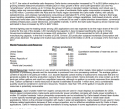You took one sentence and put it out of its main context that it is part of a whole set of factors.
You are only looking at the direct associative cost of labor building the hull.
Those systems like radars and missiles, still have to be designed by people, developed by people, coded by people, wired by people, assembled by people and put all together by people, shipped by people, and on top of the people managing all these people. The cost of a missile or a radar is much more the sum of its materials and components.
PPP disparity does matter when it affects the entire chain.
And then on top of that, you have the sheer volume of components driving down the costs thanks to the large multiblock buys. That's the 80% of the ship cost being massively amortized.
If you have a $10 billion R&D for the ship, building five of them means you have to add $2 billion development cost for each ship on top of everything. If you build 30 of them, the R/D cost per ship goes down to $333 million each.
The entire Type 052C/D looks to be heading down past the 30th ship in the combined series. Each ship has over 6,000 elements per AESA face and there are four faces. How many elements you are going to have? How is that volume going to drive down the cost of each element and what's behind it? When you are building a lot of these radars, the costs will flatten. If you build six Type 346 sets, the costs must be crazy. If you build 30 of them, the costs will fall through the floor.
I use the Type 052C/D because these ships represent the biggest breakthrough in Chinese naval warshiptech, and likely by far the biggest expenditure in R/D. The Type 055 is coasting on the developments made of the Type 052C/D. The three main tech breakthroughs in the 052C/D is the Type 346 AESA radar, the development of indigenous gas turbine, and with the D itself, the development of the U-VLS that combines both hot and cold launch in a CCL design. The R/D costs behind the 052C/D program is offset and amortized by its large production run (the 26th 052D hull under construction has been spotted).
What the 055 adds to the 052D is minor: the introduction of a new X-band four faced AESA; the introduction of an octet set of AESA type surface scanning arrays; a new ECM system; and a new ESM mast, along with taking the evolution of the Type 346 radar a step further (possible switch of GaAs to GaN). So the R/D cost of the 055 may not cost as much as the 052D, as no major breakthroughs are made. You are taking the same tech --- once revolutionary for the Chinese industry but now solidly proven --- and add more of it, from 64 VLS to 112, from two GT25000 turbines to four.



